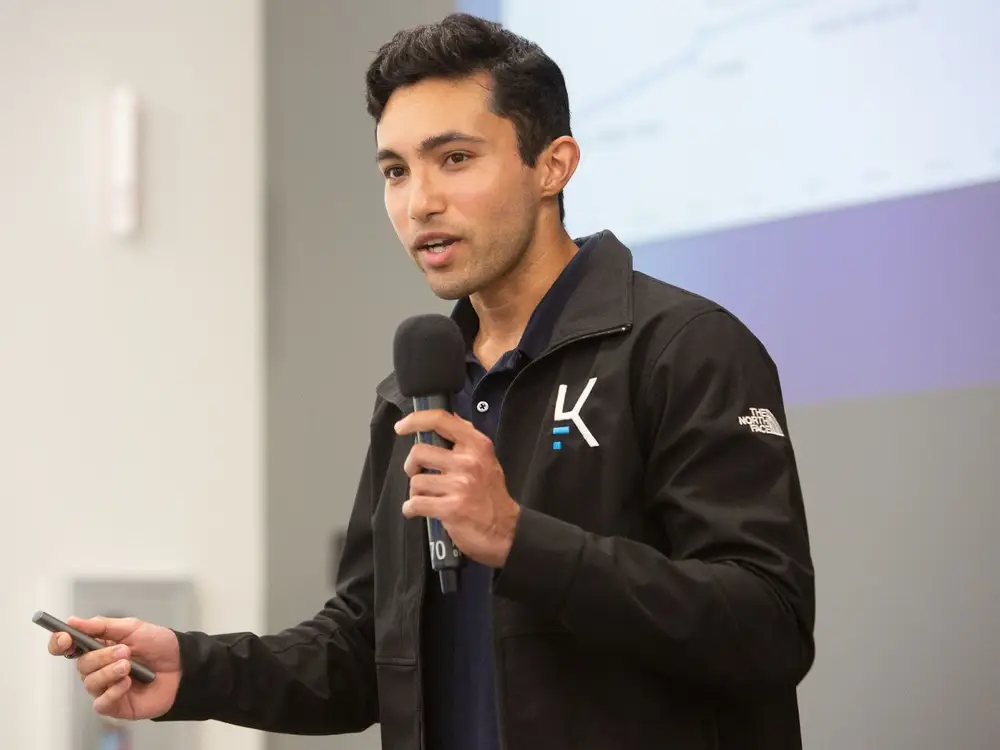How an ‘AI sabbatical’ helped accounting startup Klarity turbocharge its business

When OpenAI released ChatGPT, Nischal Nadhamuni said he “abdicated all my other responsibilities” for one month to focus on the breakthrough new technology.
In the months after ChatGPT exploded into public life, Klarity, an accounting software startup that’s backed by super-entrepreneurs Nat Friedman and Daniel Gross, faced an ah-ha moment.
Klarity’s cofounder and chief technology officer, Nischal Nadhamuni, told his team that artificial intelligence was going to disrupt everything right beneath their feet. Klarity would either adapt or lose to a competitor.
In order to figure out what was possible for Klarity with large language models that could understand as well as produce natural language or code, Nadhamuni placed a team of engineers on a “generative AI sabbatical.”
For four weeks, employees put all other new development work on hold and focused on how to use these models to improve Klarity’s product and delight customers. The only rule was radical ideas only, nothing incremental.
“I basically abdicated all my other responsibilities and just worked on AI, 12 hours a day, every day, for a month,” said Nadhamuni, who studied computer science and machine learning at MIT. “We just gutted our product and rebuilt it using generative AI.”
The result: Klarity unlocked new levels of automation for processes that were previously done by people — increasing its pass-through rate to 85% — and sped up its ability to ship features.
Investors took notice. In June, Klarity grabbed $70 million in a Series B round led by Friedman and Gross, with participation from Scale Venture Partners, Tola Capital, Picus Capital, Invus Capital, and Y Combinator. The round brings Klarity’s funding to over $90 million. It didn’t share a valuation.
“Of our portfolio, they were by far the fastest to move,” said Aaron Fleishman, a Klarity investor through his firm Tola Capital, an early-stage venture firm.
It’s a sink or swim moment for tech companies. Just as the internet transformed industry by industry 40 years ago, the rapid and unstoppable march of AI is changing every corner of society. For startups, it means adopting the tech is no longer optional; it’s fast becoming the lifeline companies need to stay afloat in a competitive market.
“Their window is closing,” Fleishman said of companies that have yet to adapt. “They can either quickly become an almost AI-native player in the market, or they’re going to fail because they’re going to get disrupted.”
‘The rules of physics have changed’
Even before its sabbatical, Klarity was well-versed in natural language processing and computer vision. Its software turned documents like order forms, invoices, and other contracts into structured data that machines can understand to the same degree as humans. This helped accountants save time and avoid costly mistakes.
Early versions of its product were built on a smorgasbord of third-party models, open-source libraries, and models that Klarity trained itself. But Nadhamuni said its own models were limited in their ability to process documents they had never seen before because they were trained on small data sets. When OpenAI released the large language model GPT-3.5, it opened new possibilities for tech firms that were using their own bespoke models.
Klarity’s sabbatical kicked off with a three-day executive team gathering to bring them on the same page. Nadhamuni gave a talk on generative AI, its history, and the latest breakthroughs in the technology. On the first night, he gave the executives homework: play around with ChatGPT on personal and work tasks.
“The way we framed it is, the rules of physics have changed,” Nadhamuni said. “Before we ideate, we need to know what the new rules are to really get a sense of what might be possible.”
On the second day, the executives huddled around a conference room table and threw a Miro board up on a screen. They asked themselves how generative AI could transform the way their product extracts data from documents and understand the nuances and context of the data. They pared down hundreds of suggestions into five key hypotheses. If the new tech could do those five things, they would rebuild the core of Klarity’s platform using generative AI.
For example, a total reset was worth considering if the new tech was better at understanding forms and data that it hadn’t seen before. If the new tech made onboarding easier for non-experts, it would completely change how Klarity sells to enterprises.
Engineers split into small groups to tackle each hypothesis. Nadhamuni said employees had “complete autonomy to do what they want, use what tools they want, obviously while respecting data governance issues.” They met on Fridays to share a roundup of the past week’s learnings.
Nadhamuni also wrote a playbook on how to run a generative AI sabbatical that’s available on Tola Capital’s blog.
By the end of the four weeks, Klarity was ready to push the nuclear button on its bespoke models in favor of using large language models. The GPUs it used are gathering dust in an office.
According to Nadhamuni, a sabbatical allowed the company to move at the speed of the tech’s rapid development. It shortened software development cycles from weeks and days to hours. And a sabbatical forced the team to radically rethink what was possible.
“What I always tell my team is assume there’s 17 iterations between where we are today and the right answer,” he said. “Don’t obsess over the right answer, obsess over how does one iterate quickly and in an informed way.”






